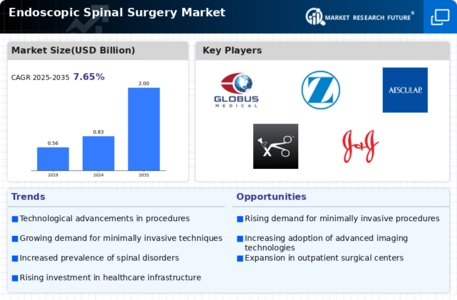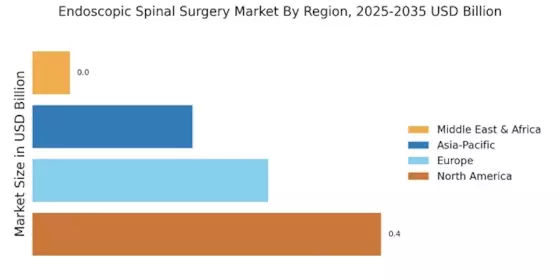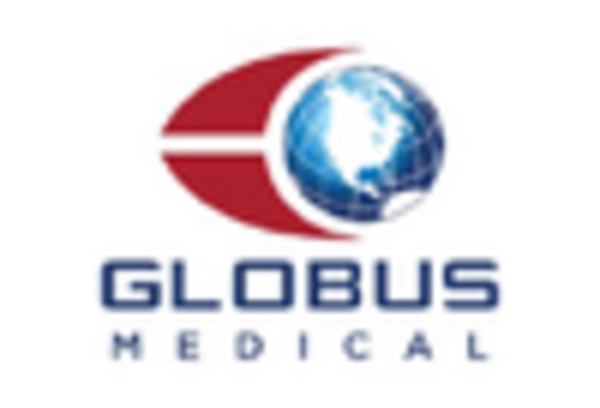Rising Incidence of Spinal Disorders
The Endoscopic Spinal Surgery Market is significantly influenced by the rising incidence of spinal disorders, including herniated discs and spinal stenosis. As the global population ages, the prevalence of these conditions is expected to increase, leading to a higher demand for surgical interventions. Recent statistics indicate that spinal disorders affect approximately 80% of individuals at some point in their lives, creating a substantial market for endoscopic procedures. This trend suggests that the Endoscopic Spinal Surgery Market will continue to grow as healthcare systems seek effective solutions to manage these prevalent conditions.
Emphasis on Training and Education for Surgeons
The Endoscopic Spinal Surgery Market is witnessing a heightened emphasis on training and education for surgeons. As the complexity of endoscopic techniques increases, there is a growing recognition of the need for specialized training programs. Institutions are developing comprehensive curricula that focus on the latest surgical techniques and technologies. This investment in education is crucial, as it ensures that surgeons are well-equipped to perform endoscopic procedures safely and effectively. Data suggests that facilities with trained personnel experience a 40% decrease in surgical errors, thereby enhancing the overall reputation of the Endoscopic Spinal Surgery Market.
Increased Investment in Healthcare Infrastructure
The Endoscopic Spinal Surgery Market is benefiting from increased investment in healthcare infrastructure across various regions. Governments and private entities are allocating substantial resources to enhance surgical facilities and upgrade medical equipment. This investment is crucial for expanding access to advanced surgical techniques, including endoscopic procedures. Data indicates that regions with improved healthcare infrastructure have seen a 25% increase in the number of endoscopic surgeries performed. As facilities modernize and expand, the Endoscopic Spinal Surgery Market is likely to experience robust growth, driven by enhanced service delivery and patient care.
Technological Advancements in Endoscopic Spinal Surgery
The Endoscopic Spinal Surgery Market is experiencing a surge in technological advancements that enhance surgical precision and patient outcomes. Innovations such as high-definition cameras, advanced imaging techniques, and robotic-assisted systems are becoming increasingly prevalent. These technologies not only improve the accuracy of procedures but also reduce recovery times, which is a critical factor for patients. According to recent data, the adoption of these technologies has led to a 30% increase in successful surgical outcomes. As hospitals and surgical centers invest in state-of-the-art equipment, the Endoscopic Spinal Surgery Market is likely to expand, driven by the demand for improved surgical techniques.
Growing Patient Demand for Minimally Invasive Procedures
There is a notable increase in patient demand for minimally invasive procedures within the Endoscopic Spinal Surgery Market. Patients are increasingly aware of the benefits associated with such techniques, including reduced pain, shorter hospital stays, and quicker recovery times. This shift in patient preference is supported by data indicating that minimally invasive surgeries can lead to a 50% reduction in postoperative complications. As healthcare providers respond to this demand, the Endoscopic Spinal Surgery Market is poised for growth, with more facilities adopting these techniques to meet patient expectations.


















Leave a Comment